
It’s springtime! The birds are chirping, the sun is shining (sometimes), and the weather is warming. As northeast Ohioans, this time of year is especially exciting for us after each seemingly endless winter. One of the most enjoyable things about spring is the flowers that come into bloom, from the tulips and daffodils dotting flowerbeds around the neighborhood to the native wildflowers scattered throughout the forest floor.
One of my favorite spring wildflowers (and one of my favorite plants, period) is Viola sororia, the common blue violet. If you are a home gardener, you are likely very familiar with this plant. This little wildflower has an unfortunate reputation as a weed because its fleshy rhizomes anchor firmly into the soil and can be difficult to remove from lawns and gardens. It also spreads easily, and can take up residence seemingly anywhere, including sidewalk cracks.

Why is this inconspicuous little plant one of my favorites? Well, one, because I learned I could actually eat violets when I was about ten years old, and the idea that I could eat flowers was the coolest thing in the world to me when I was ten. But since then, I have learned to appreciate much more about the humble violet beyond its edibility. By the end of this blog, I hope that you will join me on “team violet” after I share some of my favorite things about these delicate and misunderstood wildflowers.
Diversity and Distribution
The genus Viola is one of the top 40-50 largest angiosperm (flowering plant) genera, containing around 660 species. It is widely distributed across the world, with north America being one of the centers of diversity for the genus. Although generally small and herbaceous, there are quite a few interesting exceptions, one being a handful of woody, shrub-like violets endemic to Hawaii. In the Andes, there are also a number of peculiar violets adapted to a harsh, alpine climate that that look like succulents you might keep as a houseplant, but with violet-shaped flowers (google “rosulate violets” to see what I’m talking about). Here in eastern north America, violets are diminutive herbs with purple, white, or yellow flowers. All of the violets pictured below are native to north America.
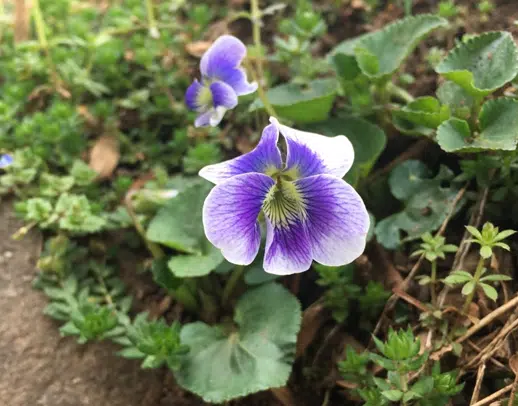
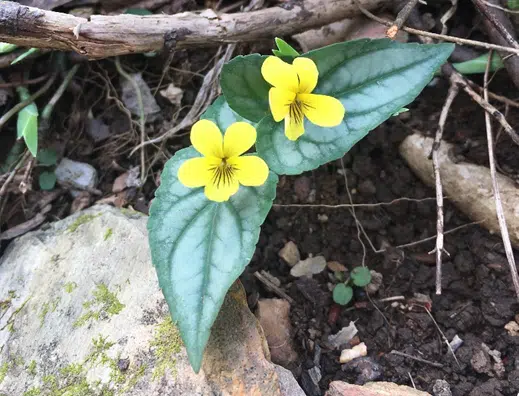
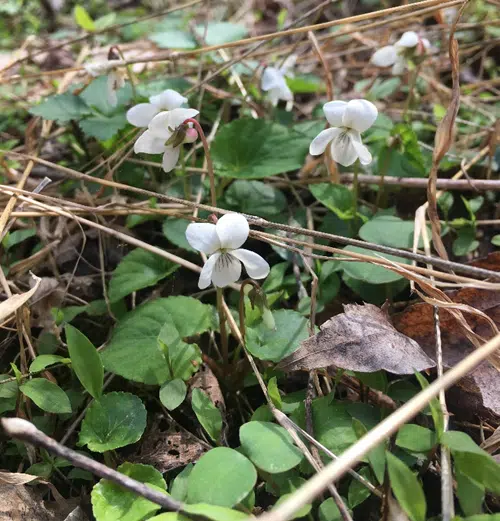
Native Pollinator Favorites
Here in northeast Ohio, violets are excellent pollinator plants. They are visited by a wide range of species, including solitary bees, bumblebees, and butterflies. Beyond providing valuable nectar to these pollinators in early spring, violets also act as a larval food source for fritillary butterflies. Similar to the relationship between monarch butterflies and milkweed plants, fritillaries will only lay their eggs on violets. Violets are also host plants for the mining bee Andrena violae, a specialist that only visits violets.
I couldn’t talk about violets and pollinators without bringing up my favorite species of violet, the long-spurred violet (Viola rostrata). Although not as common as other violet species in Ohio, long-spurred violets can be found in rich forests. While many violets possess nectar spurs– tube- or cup-shaped protrusions containing nectar– they are generally small and inconspicuous. As you can clearly see, this is not the case for Viola rostrata.

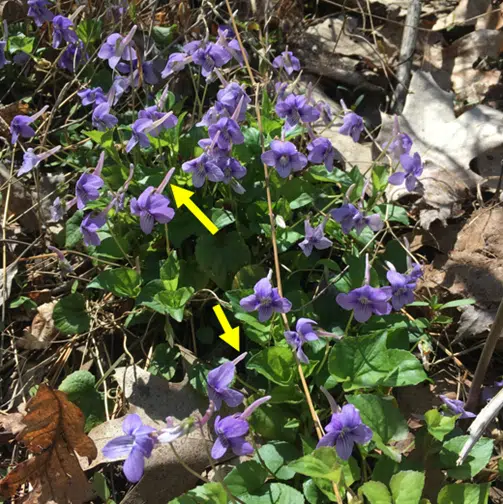
What kind of insect visits these flowers, you ask? In comes the primary pollinator of Viola rostrata, the ridiculous-looking yet incredibly cute greater bee fly, Bombylius major.

This extremely fuzzy native pollinator is a fly that sort of looks like a bee but also has legs like a mosquito. And that scary-looking long mouthpart is NOT a giant stinger—it’s a proboscis, a straw for sucking up nectar just like butterflies have. It fits perfectly in the long spur of Viola rostrata where a sweet drop of nectar awaits. In fact, the photo above is a picture I took after a bee fly landed directly on my arm when I was doing field work in the Cherokee National Forest in eastern Tennessee during graduate school. He was sticking his tongue out repeatedly to either see if I was a flower or lick the salt off of my skin, proving that these guys are friends, not foes. That same spring, I also somehow managed to capture the photo below.
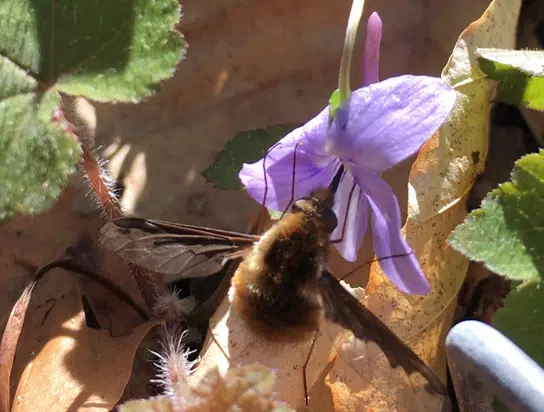
I’m not asking you to never weed another violet, but hopefully you learned something that gives you a new appreciation for them in your garden. Tell a friend—violets are awesome!

Alex Faidiga
Plant Recorder
Alex Faidiga is the Plant Recorder in the Horticulture and Collections Department at HF&G. She earned her Masters degree at the University of Tennessee, Knoxville where she studied plant evolutionary ecology and the impacts of climate change on native plants. She was excited to return to her hometown of Cleveland in 2022 to work for HF&G, one of the many places in northeast Ohio where she discovered her love for plants at a young age.













